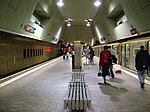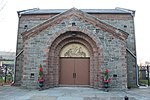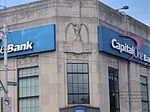King Manor

King Manor, also known as the Rufus King House, is a historic house at 150th Street and Jamaica Avenue in Jamaica, Queens, New York City. It was the home of Founding Father Rufus King, a signatory of the United States Constitution, New York state senator, and ambassador to Great Britain immediately after the American Revolution. Descendants of King's family lived in the house until 1896 when Rufus' granddaughter Cornelia King died and the house was sold to the Village of Jamaica. When the western half of Queens, including Jamaica, became part of the City of Greater New York, the house and the property were turned over to the New York City Parks Department which redesignated the land as Rufus King Park. It was declared a National Historic Landmark in 1974.
Excerpt from the Wikipedia article King Manor (License: CC BY-SA 3.0, Authors, Images).King Manor
Jamaica Avenue, New York Queens
Geographical coordinates (GPS) Address Phone number Website External links Nearby Places Show on map
Geographical coordinates (GPS)
| Latitude | Longitude |
|---|---|
| N 40.703055555556 ° | E -73.803888888889 ° |
Address
King Manor Museum
Jamaica Avenue 150-05
11432 New York, Queens
New York, United States
Open on Google Maps









